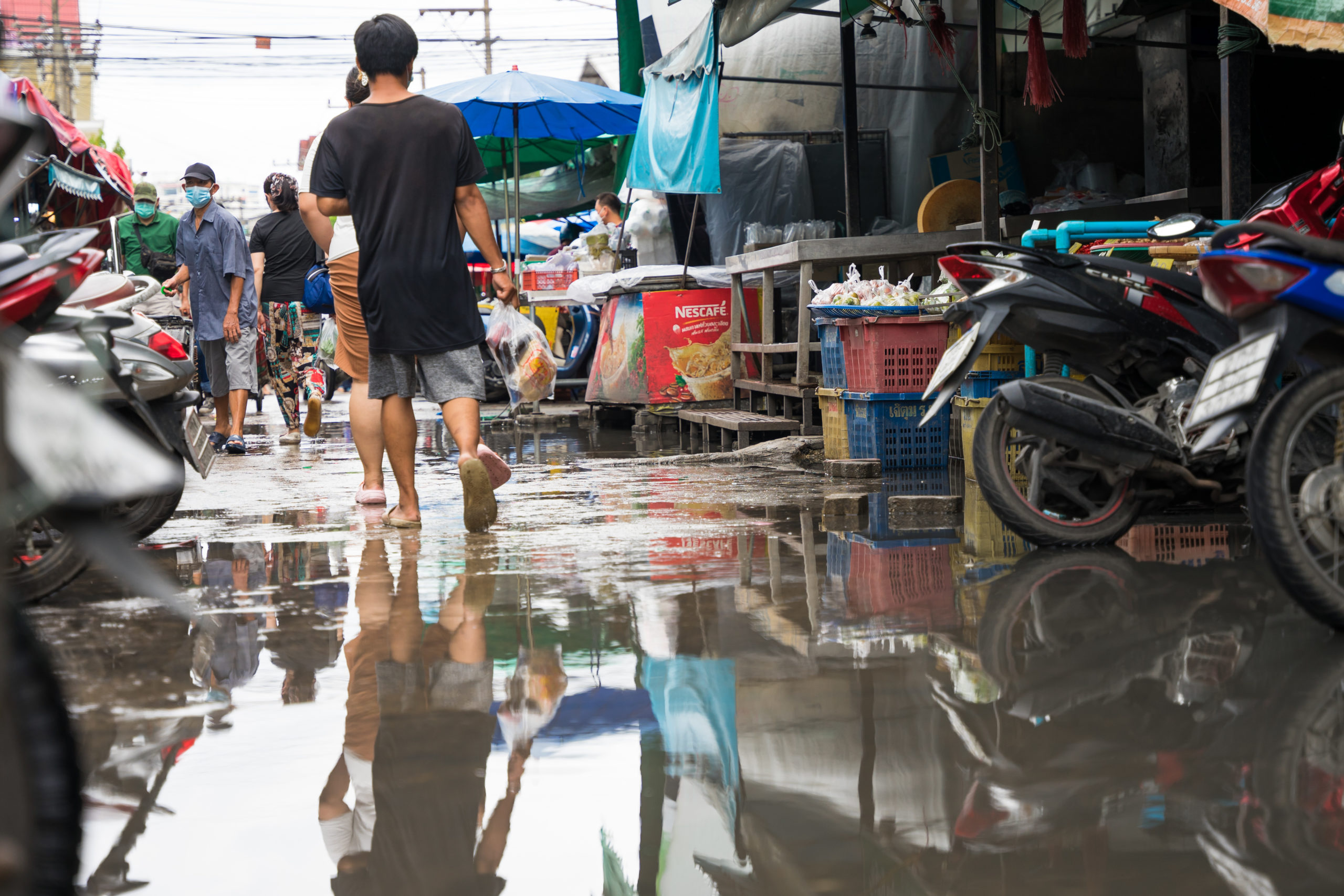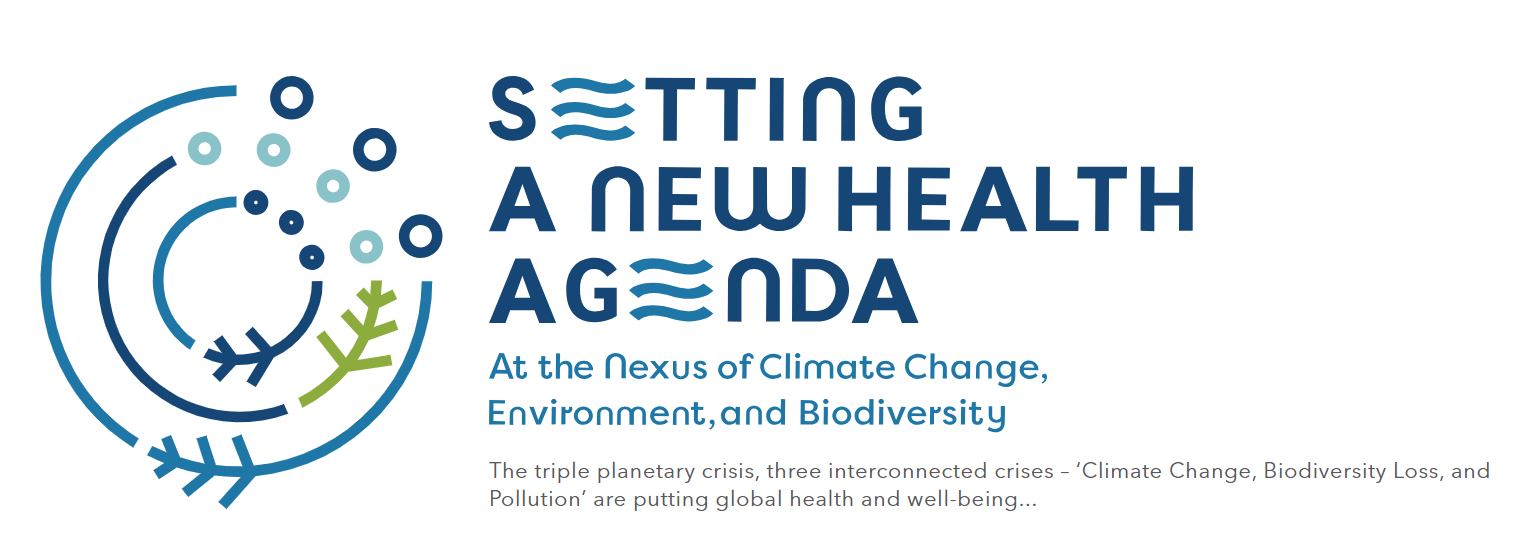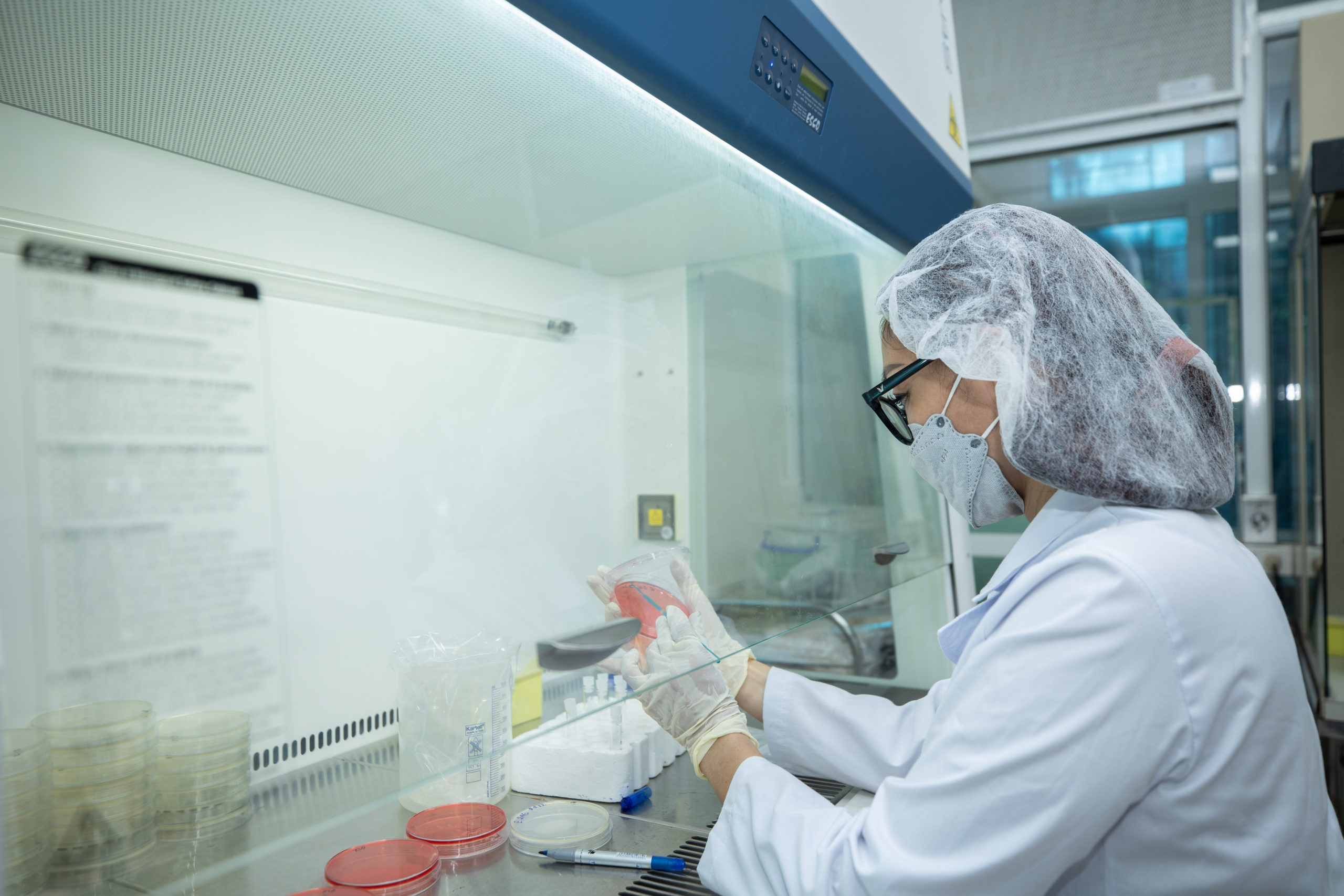A new report is calling for a drastic increase in AMR data across the continent.
First line of defence for AMR One Health must address the climate crisis
What do climate change and antimicrobial resistance (AMR) have in common? The World Health Organization states that climate change is one of humanity’s biggest health threats, and this is exacerbating another – the spread of drug-resistant superbugs. Ecosystem disruption can also be a catalyst for emerging infectious diseases that may subsequently lead to pandemics, increased use of antibiotics, and a rise in AMR.
Prevention, preparation, and adaptation are key to a One Health approach: integrating and unifying the health of people, animals, and our environment by sustainably balancing and optimising collaborative, multisectoral, and transdisciplinary research at the local, national, regional, and global levels.

Flooding at a fresh market in Chiang Mai, Thailand. Credit: Suparach Seechae for FHI 360.
Alarming alliance
Scientists have known for years about the occurrence of AMR in infectious pathogens like bacteria, viruses, fungi, and parasites that develop resistance to the medications used to treat them. The rise in AMR is historically due to the overuse and misuse of antimicrobial medicines in both humans and animals, alongside the use of substandard and falsified medicines.
We know that up to ten million people could die annually by 2050 because of AMR infections, according to a 2016 review of AMR. Presently, pneumonia, tuberculosis, enteric and other infections are becoming more difficult to treat due to the emergence of highly resistant strains of pathogens.
Now, however, climate change and AMR are forming another ‘alarming alliance’ with warming temperatures and extreme weather events creating new habitats for resistant bacteria, which in turn increases their opportunities to develop resistance.
As bacteria adjust and evolve due to increasing temperatures ... the body’s fever response as a first line of defence decreases.
Disrupting ecosystems
Preliminary research suggests that warmer temperatures allow genes that encode pathogens’ resistance to medications to be more stable and easily spread. This results in global challenges for human, animal, and environmental health systems; therefore, our response requires a One Health approach targeting all sectors.
Focusing on improving AMR data surveillance in Africa and Asia, the Fleming Fund countries are highly vulnerable to both climate change and AMR risks, demonstrating the need to identify and reduce these concerns through climate-informed systems.
The Prince Mahidol Award Conference (PMAC) in Bangkok brings together world leaders and decision-makers calling for joint action to improve human and the planet’s health. This year, the event set a new health agenda at the ‘Nexus of Climate Change, Environment, and Biodiversity’, and among the organisers was Fleming Fund grantee FHI 360, managed by Mott MacDonald, who led and supported several of the conference’s sessions emphasising the links between climate change and AMR and its complex ecosystem interplay.
Presentations focused on environmental threats, such as deforestation and flooding, which can increase pollution and global temperatures. This puts people in closer contact with animals and environments that may harbour pathogens and increases waterborne infections from contaminated water, increasing the risk of AMR.
The increase in extreme weather events and natural disasters, like flooding, cyclones, and drought, can also cause infrastructure damage (including sewage and wastewater), mass displacement of people, and overcrowding – all of which also contribute to increasing AMR.

PMAC 2023's new health agenda at the Nexus of Climate Change, Environment, and Biodiversity, supported by Fleming Fund grantee FHI 360.
Breeding grounds
In the damaging aftermath of these natural disasters and extreme weather events access to health services is often affected, leading to an increase in preventable infectious diseases.
Health systems are quickly overloaded and overwhelmed or completely disrupted often leading to antibiotic misuse to treat possible infections; self-medication and indiscriminate use of antibiotics with diagnostic drug susceptibility services suspended; these all increase the emergence of AMR.
As well as extreme events, gradual onset changes, like fluctuations in seasonal temperatures and rainfall, also play a role; microbes, including drug-resistant superbugs, adapt to these changes and survive in new areas.
With growing infection and AMR rates additional antibiotics are used, many of which are usually saved for more serious infections. This increases the pressure on pathogens and promotes further AMR development – a vicious circle.
As global temperatures continue to rise, new breeding grounds are created for resistant pathogens. Climate change contributes to AMR through horizontal gene transfer (HGT) – allowing the transfer of resistance genes to increase by quickly spreading between a growing number of present bacteria when the global temperature rises. As bacteria adjust and evolve due to exposure to increasing temperatures, the effectiveness of the body’s fever response as a first line of defence decreases.
Competing bacteria
An example of a disease affected by climate change is salmonellosis. The growth of Salmonella is intensified by both high temperatures and high humidity, and strains are becoming increasingly resistant to antibiotics.
Research has also found that some organisms produce and release antibiotics to influence and control competing bacteria in their environment. The competition results in the transfer of genetic material that naturally confers antibiotic resistance.
This plays a crucial role in the introduction of natural resistance genes into clinically relevant bacterial species from environmental sources like water, sewage, and air. The production of bacterial mutations and the expression of antibiotic-resistance genes are additionally aided by heavy rainfall.
Rising global temperatures could also result in the release of pathogens that have been frozen for thousands of years - such as a reindeer carcass that had been infected with anthrax centuries before in Russia reportedly linked to an outbreak of anthrax in Siberia in 2016.
Warming accelerates glacier melting and thawing of permafrost, which may contain unencountered bacteria; some of which may already be inherently resistant to antibiotics. Emerging or re-emerging pathogens may be untreatable or contain new resistance mechanisms that could spread as glaciers and frozen soil in the Arctic melt.

National Center for Veterinary Hygiene Inspection, Hanoi, Vietnam, as a Fleming Fund Vietnam project partner. Credit: Vu Ngoc Dung for FHI 360.
AMR and climate change
Although AMR is an existing issue, only in recent years have scientists warned that the consequences of climate change may make it worse.
Climate change encourages the spread of vector-borne human and animal pathogens - insects transmit new diseases, and microbes adapt, spreading to new locations. Climate change is also increasing the pressure on food production and agriculture systems, which may lead to increased AMU in agriculture to meet global food security.
As climate change, global warming and AMR’s unabated progression disproportionately impact the health and well-being of people in low-middle-income countries, it is our responsibility to address both issues to protect public, animal, and environmental health alike.
To face these challenges, it is vital that we continue to find ways to combat climate change that drives AMR and threatens our global health.
FHI 360’s Janet Robinson shares the importance of climate-smart health care at #PMAC2023.
Authored by Janet Robinson, F.I.B.S., Director, Emerging Infectious Diseases and Health Security at FHI 360 who presented at PMAC 2023; and Professor Stan Fenwick, Fleming Fund Technical Lead for One Health and Animal Health, Mott MacDonald, who attended the conference.
More Like This
Studies & Reports
From Studies & Reports, MAAP warns Africa ‘flying blind’ from stark findings of incomplete AMR data , Date: 18/11/2022
As the global health community rallies to support the COVID-19 response, the Fleming Fund is committed to continuing crucial work on AMR, during this crisis and beyond.